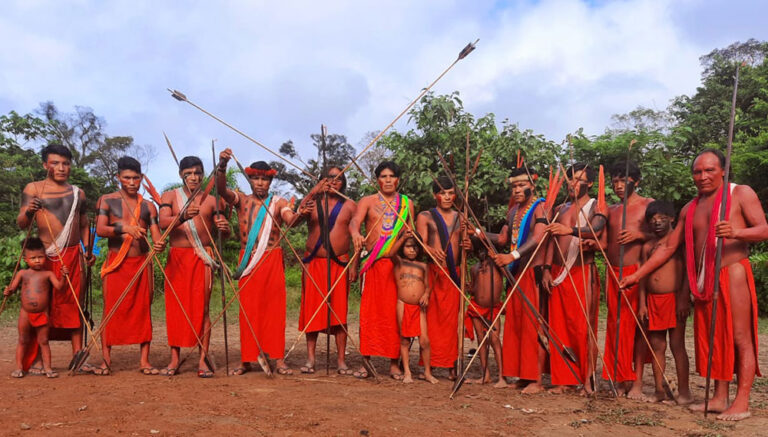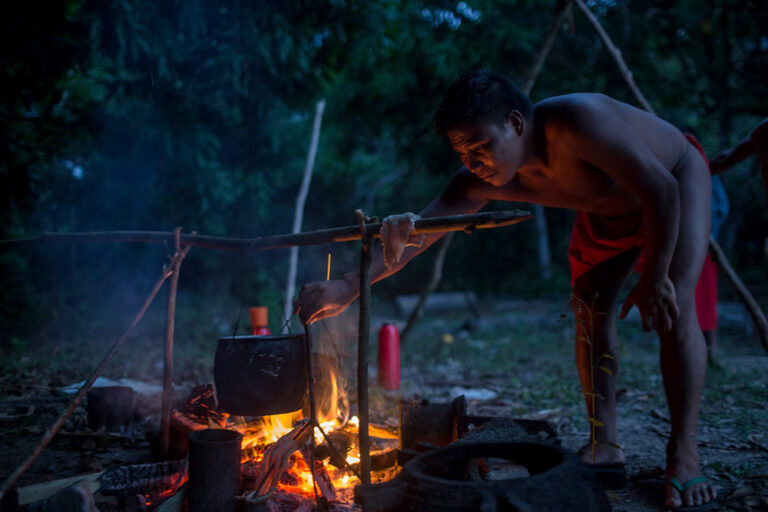
WAJÃPI PROGRAM
The Wajãpi Program operates in the Wajãpi Indigenous Land, located in the northern region of Brazil, in the state of Amapá.
The Wajãpi Program is older than Iepé itself and served as one of its foundations, having begun in 1992 at the Indigenous Work Center (Centro de Trabalho Indigenista – CTI). Over the course of almost three decades of the program’s existence, notable actions include efforts to demarcate and continually monitor the Wajãpi Indigenous Land (TIW), the training of teachers, health agents, researchers, and Wajãpi socio-environmental agents, as well as support for the establishment and activities of the Wajãpi Villages Council – Apina, founded in 1994, and the Wajãpi Land, Environment, and Culture Association – Awatac, created in 2010.
In recent years, the focus of the program’s work has been to provide assistance in the development and implementation of the Socio-Environmental Management Plan for the Wajãpi Indigenous Land (published in 2017). This plan aims to strengthen the specific ways in which the Wajãpi people relate to their territory and its components.
This line of work also involves supporting the coordination of the Wajãpi with government agencies and neighboring communities in the preservation of the forest and the pursuit of sustainable development alternatives for the region.

| WAJÃPI INDIGENOUS LAND: | |
| AREA | 607,017 hectares |
| POPULATION (Source: IEPÉ, 2019) | 1,454 |
| NUMBER OF VILLAGES (Source: IEPÉ, 2019) | 95 |
| PEOPLE | Wajãpi |
| LANGUAGE | Wajãpi |
| MUNICIPALITIES | Laranjal do Jari, Mazagão, and Pedra Branca do Amapari |
| LEGAL STATUS | Homologated – 05/24/96 |

